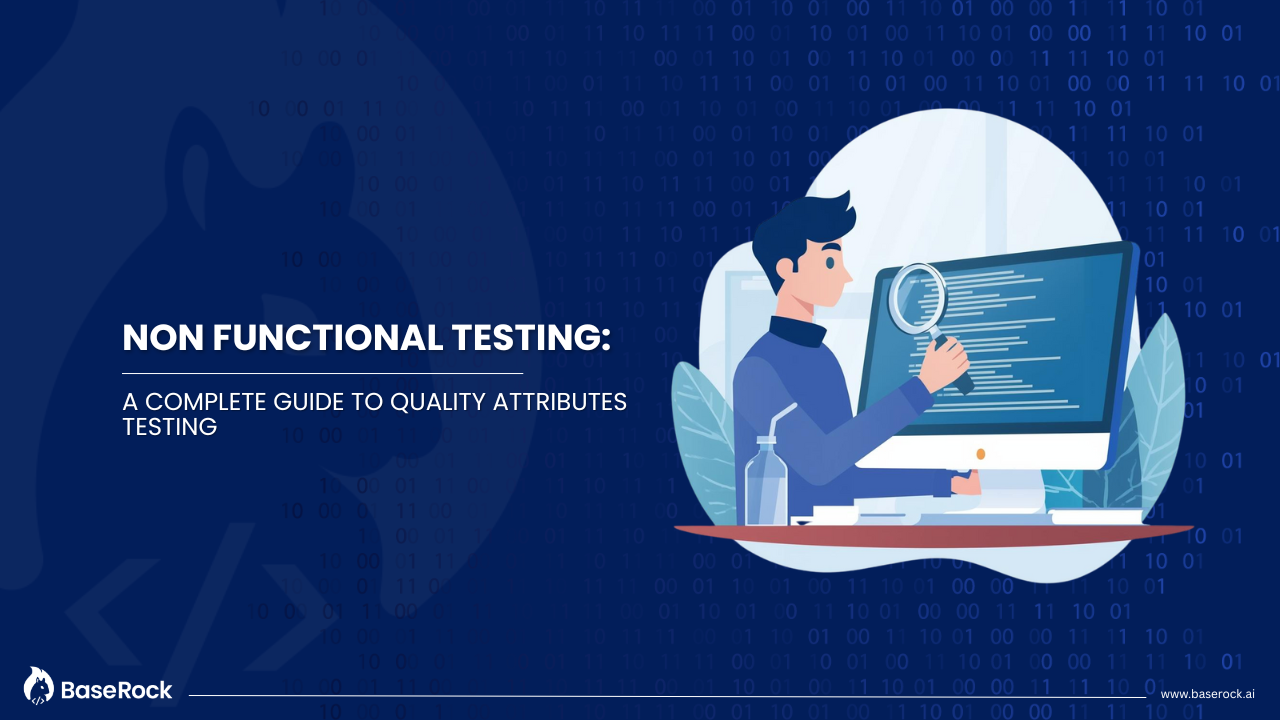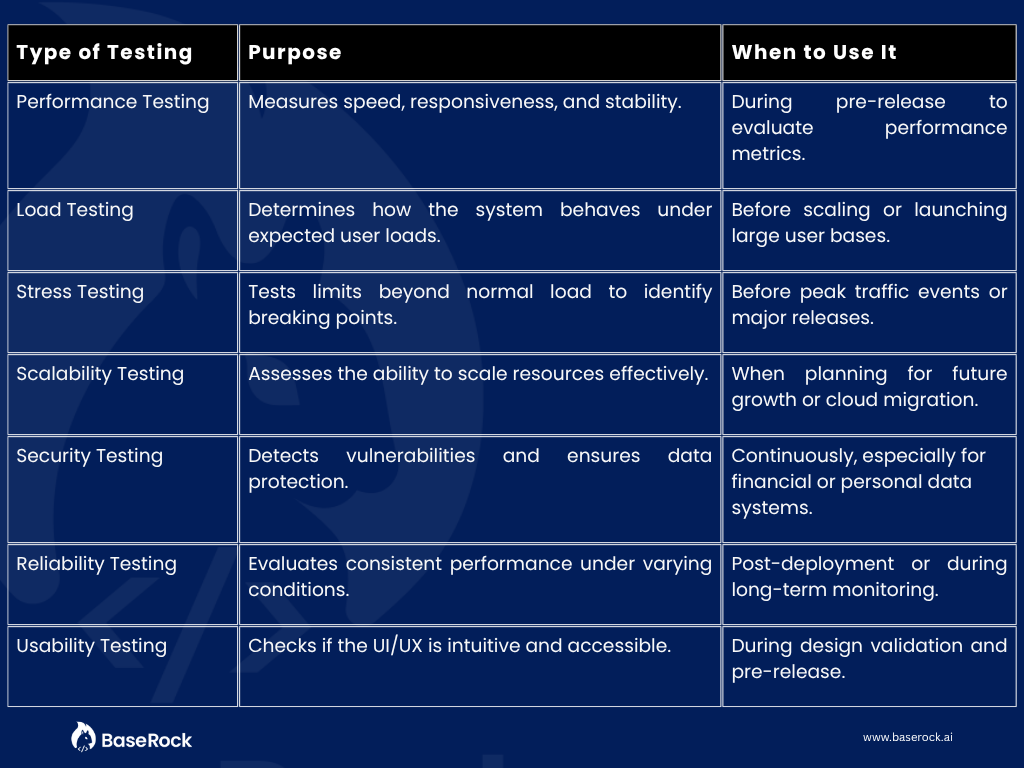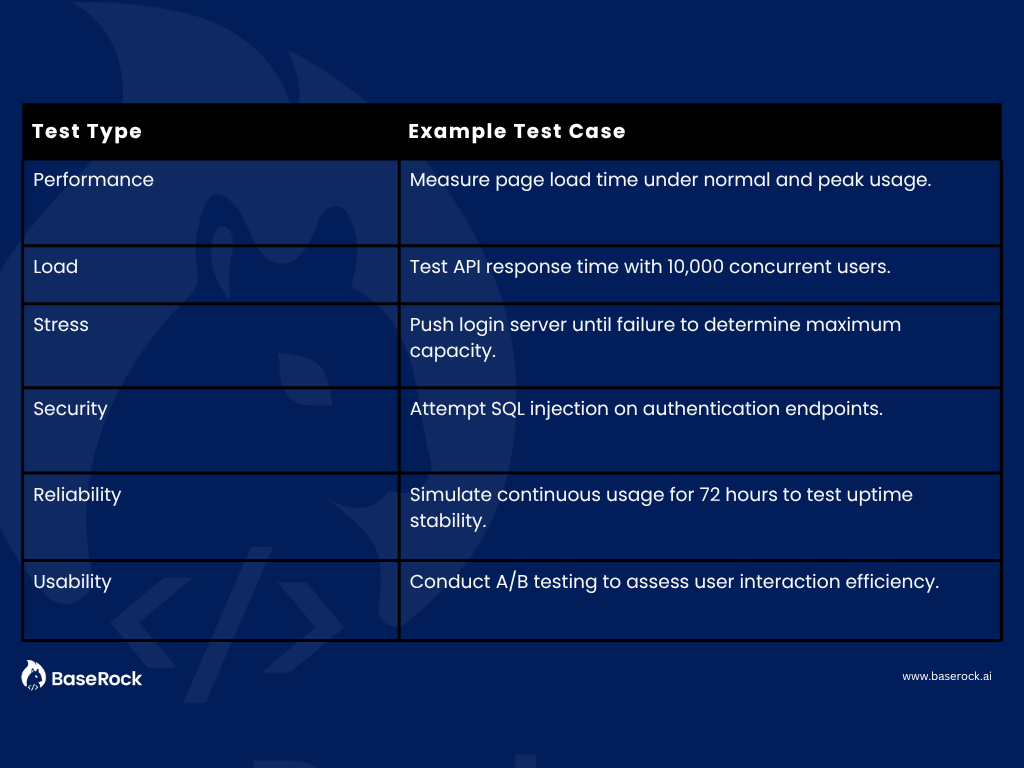.png)
In today’s fast-paced digital world, delivering high-performing, secure, and user-friendly software is more critical than ever. While functional testing ensures that a product behaves as expected, non-functional testing validates how well it performs under different conditions. This includes aspects like performance, scalability, usability, and reliability — essential for ensuring a seamless user experience.

At Baserock.ai, our mission is to help teams automate and optimize non-functional testing using AI-driven solutions, ensuring every release is not just functional but also flawless under pressure.
Non-functional testing focuses on the quality attributes of software systems rather than specific behaviors or features. It answers questions like:
In essence, non-functional testing evaluates how the system performs, not what it does.
Key attributes assessed include:
By performing this kind of testing early and often, teams ensure that the final product meets both user expectations and business requirements.
Non-functional testing encompasses several specialized test types. Here are the most important ones every QA team should include:

Each type plays a crucial role in guaranteeing a stable, secure, and user-centric product experience.
Modern users expect instant, reliable, and secure digital experiences. Applications that crash under high traffic or suffer from long load times risk losing both users and revenue.
Non-functional testing ensures:
By validating these aspects, organizations can uphold Service Level Agreements (SLAs), avoid costly downtime, and strengthen their competitive edge.
Here are some practical non-functional test case examples that QA teams can execute:

Such cases help teams uncover performance bottlenecks and usability gaps before they affect end users.
Modern QA processes rely heavily on automation tools to conduct non-functional testing efficiently. Popular tools include:
But the future lies in AI-powered platforms like Baserock.ai.
Baserock.ai automates non-functional testing by:
This enables QA teams to shift from reactive testing to predictive quality assurance, saving time and reducing costs.
To integrate non-functional testing effectively, follow this structured approach:
By making non-functional testing an integral part of the QA workflow, teams can ensure software that not only works but thrives under all conditions.
The future of QA lies in AI-driven non-functional testing. Emerging technologies are revolutionizing how tests are executed, analyzed, and optimized.
Key trends shaping the future include:
With platforms like Baserock.ai, companies can leverage machine learning to achieve faster test cycles, smarter insights, and higher software reliability — redefining what quality means in software engineering.
Q1: What is the difference between functional and non-functional testing?
Functional testing checks what the system does, while non-functional testing examines how well it performs.
Q2: What are the most common types of non-functional testing?
They include performance, load, stress, scalability, security, reliability, and usability testing.
Q3: When should non-functional testing be performed?
Ideally throughout the software development lifecycle, especially before major releases.
Q4: Can non-functional testing be automated?
Yes. Tools like JMeter and AI platforms such as Baserock.ai enable full or partial automation.
Q5: How does non-functional testing improve user experience?
It ensures apps are fast, reliable, and intuitive—key factors that enhance satisfaction and retention.
Non-functional testing is no longer optional—it’s a necessity for delivering high-quality digital experiences. By combining traditional testing methods with AI-powered automation from Baserock.ai, teams can elevate software quality, reduce risks, and achieve continuous delivery with confidence.
Flexible deployment - Self hosted or on BaseRock Cloud